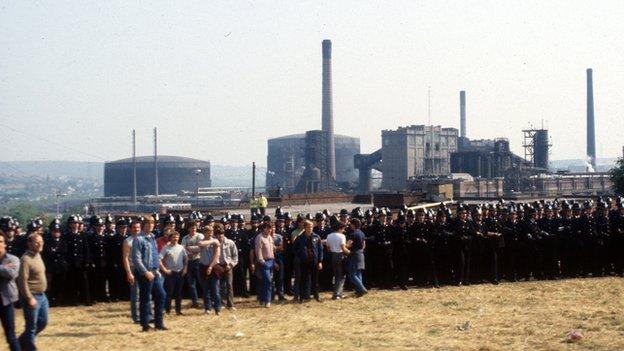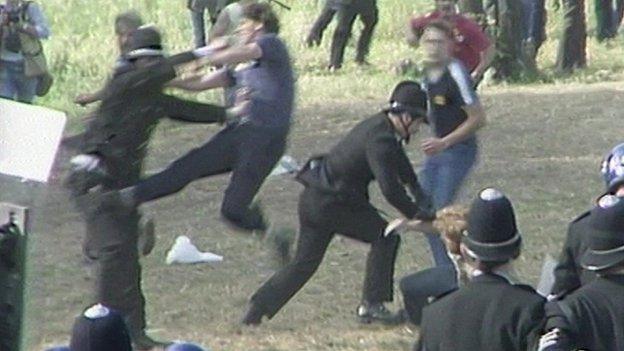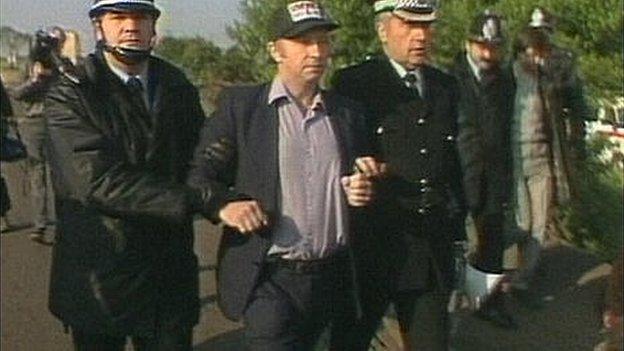Background: 'The Battle of Orgreave'
- Published

Thousands of miners and police officers clashed at Orgreave coking plant as pickets attempted to stop lorry loads of coke leaving the site
The "Battle of Orgreave" was one of the most violent clashes of the 1984-5 miners' strike, but what was its significance?
What happened at Orgreave?
Monday 18 June 1984 was the most violent day of the year-long miners' strike.
Thousands of pickets met huge lines of police - who were brought in from all around the country - outside the Orgreave coke works near Rotherham.
The miners wanted to stop lorry loads of coke leaving for the steelworks. They thought that would help them win their strike, and help protect their pits and their jobs. The police were determined to hold them back.
There was violence from both sides.
The debate goes on about who acted first, but police horses were sent to charge the crowd up the field and officers followed to make arrests. Many miners and police officers were injured.
Why was it significant?

More than 120 officers and pickets were injured during the clashes at Orgreave
The pictures of miners and police officers fighting shocked TV viewers.
The number of officers was unprecedented. The use of dogs, horses and riot gear in an industrial dispute was almost unheard of. Some of the tactics were learned from the police in Northern Ireland and Hong Kong who had experience dealing with violent disorder.
During the subsequent court case a police manual was uncovered which set out the latest plans to deal with pickets and protests.
Police vans and Range Rovers were fitted with armour so they could withstand the stones being thrown by some in the crowd. The miners suspected the whole operation was being run under government control.
Many believe Orgreave was the first example of what became known as "kettling" - the deliberate containment of protesters by large numbers of police officers. It marked a turning point in policing and in the strike.
It was the moment the police strategy switched from defensive - protecting collieries, coking plants and working miners - to offensive, actively breaking up crowds and making large numbers of arrests. In many mining communities faith in the police was destroyed, a legacy that lasts to this day.
There were questions in court about the reliability of the police evidence. Many of the statements made by officers were virtually identical. At least one had a forged signature.
Eventually the case was thrown out and the arrested miners were cleared.
What impact did it have on the community?

Arthur Scargill, who was president of the National Union of Mineworkers at the time, was one of 93 arrested at Orgreave
The miners felt they had been set up.
They believed the intention that day was to beat them and make arrests, a show of force that would convince them they were not going to win.
That left a bitter legacy of hatred and distrust of the police in many mining communities.
The police said they were just doing their job in the face of violence from striking miners. The strike lasted until March 1985.
Hundreds of mines closed afterwards and many miners faced redundancy. Even the Orgreave coke works itself has now gone. Houses and a business park are now gradually taking over the site.
The IPCC's decision will disappoint the campaigners who say they want "justice". But they say this is not the end. They will carry on campaigning for a full public inquiry into the way the police behaved throughout the year-long dispute.
- Published12 June 2015
